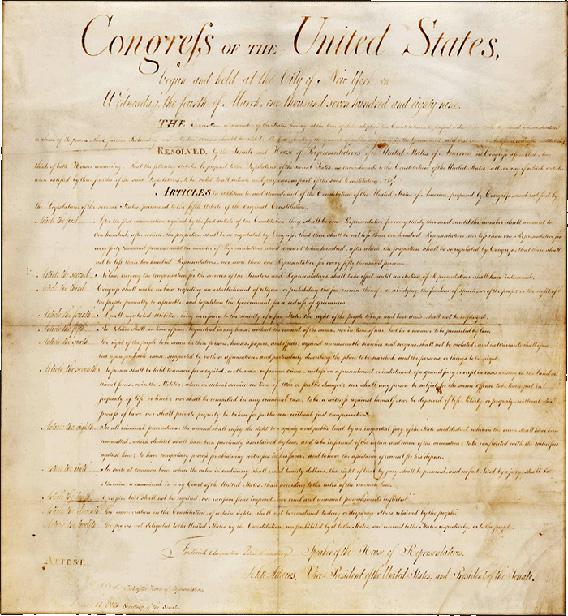Read more on Slate about gun control.
President Obama asked Congress to reinstate the assault weapons ban and outlaw high-capacity magazines on Wednesday. He argued that his proposal is consistent with the Second Amendment, which some Americans hold as dear as the freedoms of speech and religion. Does the right to bear arms come second in the Bill of Rights because the founding fathers thought it was the second most important amendment?
No. The Bill of Rights has an order, but it has nothing to do with the relative importance of the rights. James Madison, who whittled down the long list of amendments proposed during constitutional ratification, argued that all changes to the Constitution should be incorporated into the text itself rather than tacked on the end. Connecticut’s Roger Sherman disagreed and won the argument, giving us the numbered list of 10 amendments we have today. The order of that list, however, still reflects Madison’s view: They come in the same order as the sections of the Constitution that they would have modified.
The original first amendment, which did not pass, outlined how the number of seats in Congress would rise in response to population growth—a modification of Article I, Section 2 of the Constitution. The original second amendment, which initially fell short of ratification and later became the 27th Amendment, banned members of Congress from raising their own salaries before voters had an opportunity to oust them. That related to Article I, Section 6, which deals with congressional compensation.
The now-sacred First Amendment was originally slated to sit in the far less distinguished third position. That doesn’t mean the founding fathers thought congressional salary more important than the freedom of speech. Rather, the First Amendment relates to the powers of the legislature, which come later in the Constitution than does the structure of Congress. According to Yale professor Akhil Reed Amar, the provision we now know as the First Amendment begins with the phrase “Congress shall make no law” because it contrasts with Article I, Section 8, which begins “Congress shall have power.”
The Second, Third, and Fourth Amendments limit what Congress may do, extending the list of proscriptions found in Constitution’s next provision, Article I, Section 9. Amendments five through eight, dealing with such issues as juries, bail, and cruel and unusual punishment, limit the government’s judicial powers. They relate to Article 3 of the Constitution, which establishes the court system. The final two amendments from the Bill of Rights are guides to interpreting the Constitution as a whole, and likely would have been added to the end.
Although the order of the Bill of Rights doesn’t bear on the relative importance of our freedoms, it may shed light on how the founding fathers interpreted the amendments. Modern Americans who rhapsodize about the freedoms guaranteed in the Bill of Rights tend to group together amendments two (guaranteeing the right to bear arms), three (preventing the government from quartering soldiers in the homes of citizens), and four (prohibiting unreasonable searches and seizures). They view the three provisions as a wall of separation between the government and the private space of a citizen’s home. There are indications, however, that the founders considered only the Fourth Amendment to relate to the general inviolability of personal property and the home. The Second and Third Amendments were targeted at Congress’s war powers. This interpretation bears on the breadth of Americans’ right to bear arms: If the framers intended the right to bear arms to be part of a citizen’s participation in national defense, there is greater room for the government to regulate the keeping of firearms for other purposes, like hunting or defense of the home from intruders.
Got a question about today’s news? Ask the Explainer.
Explainer thanks Akhil Reed Amar of Yale Law School, author of The Bill of Rights: Creation and Reconstruction, and A.E. Dick Howard of the University of Virginia School of Law.
